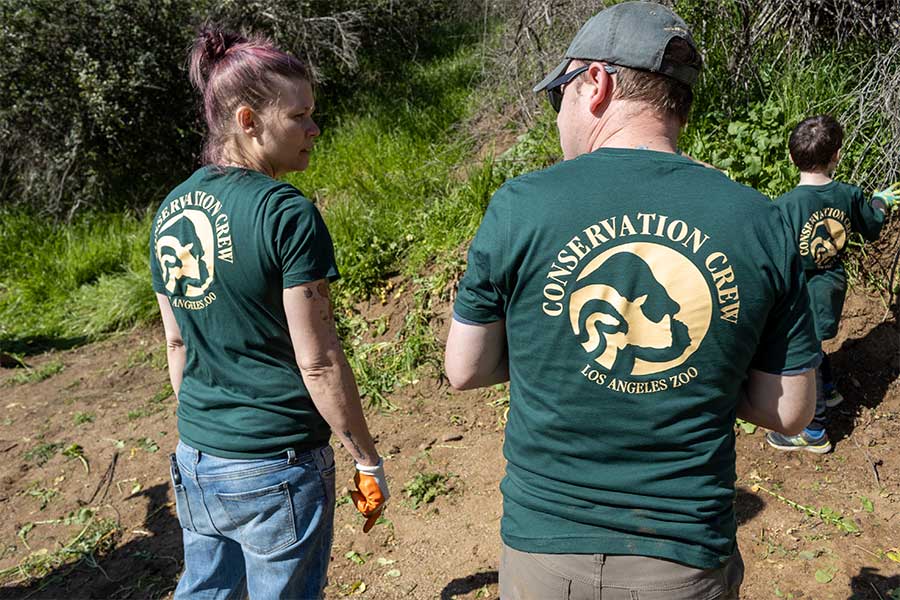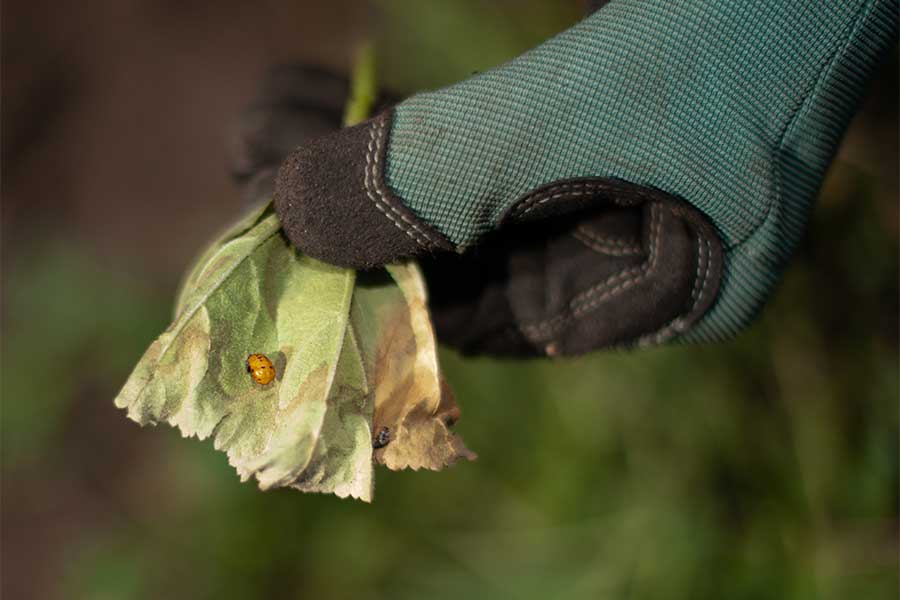Project Pollinator Gardens
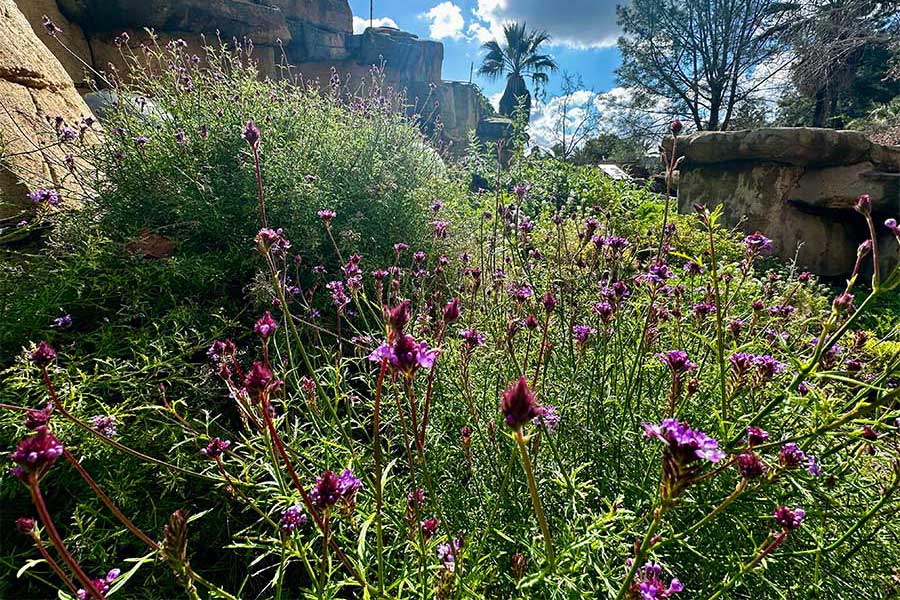
The Los Angeles Zoo’s Conservation Committee, staff, and volunteers have co-created pollinator friendly habitats both on-site at the Los Angeles Zoo and inside Griffith Park. These micro-habitats are healthy, enriched areas for migratory birds, bees, butterflies, and other native wildlife. Not only are these gardens an example of the Zoo’s commitment to AZA’s SAFE programs for North American songbirds and monarch butterflies, they are also examples of what Angelenos can create in their homes and communities.
Below are a variety of habitat restoration projects that are examples of what can be done around Los Angeles to help make positive change for wildlife.
Project Pollinator HQ
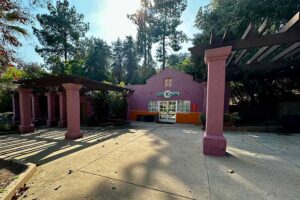
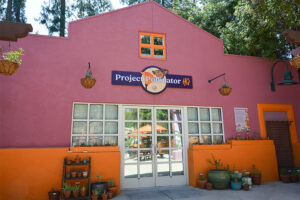
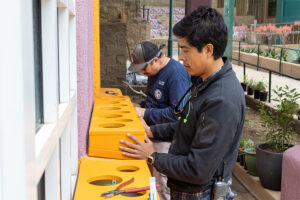
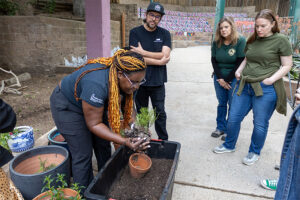
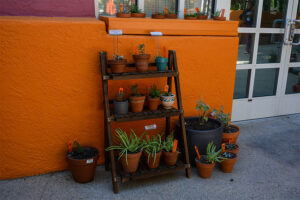


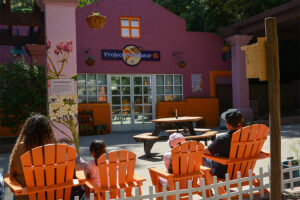
The Zoo has transformed an unused building façade and patio into Project Pollinator HQ. Located across from the Under Over Garden in the Winnick Family Children’s Zoo, this seasonally curated space includes learning activities, community science, conservation messaging, nature play, and milkweed propagation. Project Pollinator HQ provides a demonstration space for Zoo guests who are interested in supporting native biodiversity whether that means starting a native garden or potted plant area at their home.
California Native Gateway Garden
In collaboration with the City of Los Angeles Mayor Karen Bass, Department of Water & Power, General Services Department, Metropolitan Water District, and the Theodore Payne Foundation, the Los Angeles Zoo has converted 14,000 square feet of non-native turf grass in the Zoo’s parking lot to a drought-tolerant pollinator garden that will attract native birds and pollinators. This unique project highlights the importance of adapting our environment to a natural setting as we continue to experience the devastating effects of climate change, including extended droughts and extreme heat. The California Native Gateway Garden was made possible by funding from the SoCal Water$mart Commercial Turf Replacement Rebate Program.
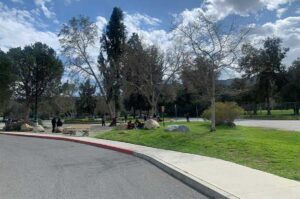

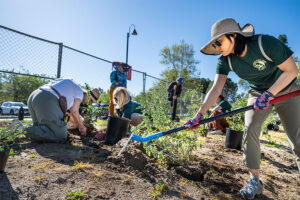
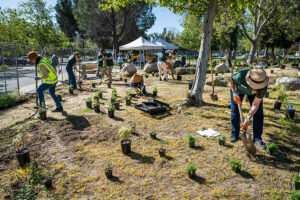
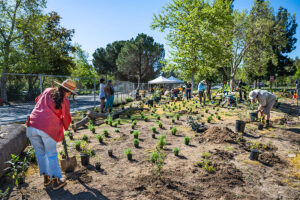

Video
Video transcript
We’re here at the California Native Gateway Garden, which is a new installation at the front entrance of the Los Angeles Zoo. And this is part of, a larger program called Project Pollinator. To increase native habitat for pollinators like birds, bats, bees, other bugs, and really promote native plants that are here from Los Angeles and the surrounding area. And so we’re putting in about seven hundred different plants of around forty different species, so we have a real big diversity of plants so we can bring in diversity of of wildlife and support them.
And so over the next few years, right here at the the entrance of Los Angeles Zoo, you’ll see this garden, blossom and grow and become this really deep dense multi layered, garden of native plants, native wildlife, and over time you’ll be able to track it and see the changes and see the different wildlife. It’s really exciting and it’s part of this big effort, both at the Los Angeles Zoo and it, you know, our partners throughout the city to improve the habitat for native species.
Miyawaki Micro-Forest – Griffith Park’s Bette Davis Picnic Area

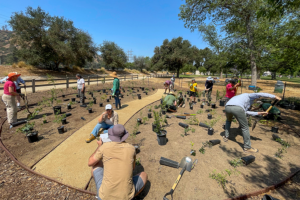
![Miyawaki Micro-forest Installation [Before; 2021]](https://lazoo.org/wp-content/uploads/2024/03/3-Miyawaki-micro-forest-300x200.png)
![Miyawaki Micro-forest Installation [After; 2023]](https://lazoo.org/wp-content/uploads/2024/03/4-Miyawaki-blooming-300x200.png)

Under the leadership of the L.A. Parks Foundation and in partnership with the Griffith Park Commonwealth Nursery, the Los Angeles Zoo’s Conservation Committee helped install the first-ever Miyawaki Micro-Forest inside Griffith Park at the Bette Davis Picnic Area. This micro-forest is a fully self-sustaining native habitat benefitting the native wildlife that calls Griffith Park home. All of the seeds for the 145 individual plants in this habitat were collected directly from Griffith Park and grown at the Commonwealth Nursery.
Native Plants:
- Toyon (Heteromeles arbutifolia)
- Lemonadeberry (Rhus integrifolia)
- Coffeeberry (Frangula californica)
- Elderberry (Sambucus nigra ssp. caerulea)
- California black walnut (Juglans californica)
- Coast live oak (Quercus agrifolia)
- California bay (Umbellularia californica)
- Climbing penstemon (Keckiella cordifolia)
- California wild rose (Rosa californica)
- Creeping snowberry (Symphoricarpos mollis)
- Fuschia-flowered gooseberry (Ribes speciosum)
The Resources page has more information on where to find native seeds and plants as well as how to create a native habitat.
Griffith Park Habitat Restoration – Fern Dell West Trail
Since 2022, the L.A. Zoo has been a partner with the Los Angeles Department of Recreation and Parks to collaborate on a long-term habitat restoration project inside Griffith Park. Each first Saturday of the month, the Zoo hosts a volunteer event at the Fern Dell West Trail to survey wildlife, collect trash, and remove invasive plants like tree tobacco, cocklebur, poison hemlock fennel, mustard, and castor bean.
![L.A. Zoo Conservation Committee removes invasive cockleburr [Before, 2022].](https://lazoo.org/wp-content/uploads/2024/03/Fern-Dell-Trail-Before-300x200.jpg)
![L.A. Zoo Conservation Committee removes invasive cockleburr. [After, 2022]](https://lazoo.org/wp-content/uploads/2024/03/Fern-Dell-Trail-Cocklebur-after-300x200.jpg)
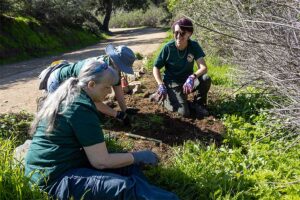
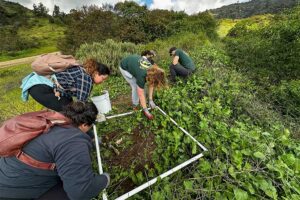
Native Plants of the West Trail:
- Black sage (Salvia mellifera)
- White sage (Salvia apiana)
- Coast live oak (Quericus agrigolia)
- Northern California black walnut (Juglans hindsii)
- Toyon (Heteromeles arbutifolia)
- Sugar bush (Rhus ovata)
- Mulefat (Baccharis salicifolia)
- Lemonadeberry (Rhus integrifolia)
- Laurel sumac (Malosma laurina)
- Sticky monkeyflower (Mimulus aurantiacus var. pubescens)
- Linear leaved goldenbush (Ericameria linearifolia)
- Leafy California buckwheat (Eriogonum fasciculatum var. foliolosum)
- California sagebrush (Artemisia californica)
- Wild cucumber (Marah macrocarpa)
- California poppy (Eschscholzia californica)
- Golden yarrow (Eriophyllum confertiflorum)
- Sacred datura (Datura wrightii)
The Resources page has more information on where to find native seeds and plants as well as how to create a native habitat.
Under Over Garden
Located inside the Winnick Family’s Children’s Zoo is an immersive and stunning display of native plants that pollinators love. In collaboration with the Zoo’s Ground Maintenance team, the Zoo’s Conservation Division installed this native habitat in the former prairie dog exhibit. Since this space was no longer used to house animals, the Zoo created a space where pollinators could safely find refuge and food sources while providing Angelenos with an example of rehabilitating disturbed land for a native habitat.
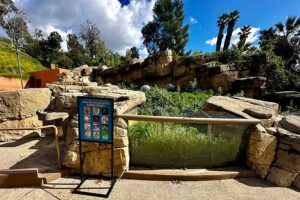
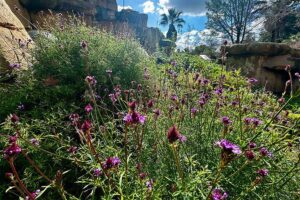
Channel Islands Bird Garden
Located near the Zoo’s Sea Life Cliffs is a native habitat containing plants indicative of California’s Channel Islands. From California buckeye; Catalina Island ironwood; and beautiful, vivid toyon, this entry garden displays some of the richest flora found in the unique biome of the Channel Islands. This habitat is a great resting place for migratory birds and native pollinators, such as monarch butterflies and bees.
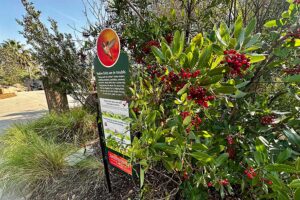

Children’s Discovery Center Native Garden
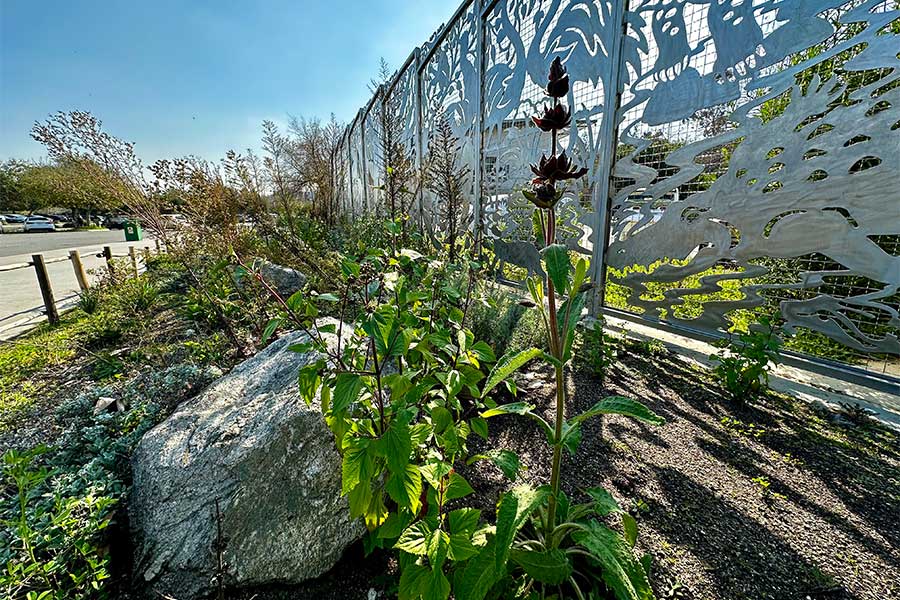
Located in the Zoo’s parking lot near the Children’s Discovery Center is this native pollinator garden, installed with the Zoo’s partners at LAUSD’s North Hollywood High School Zoo Magnet Center.


